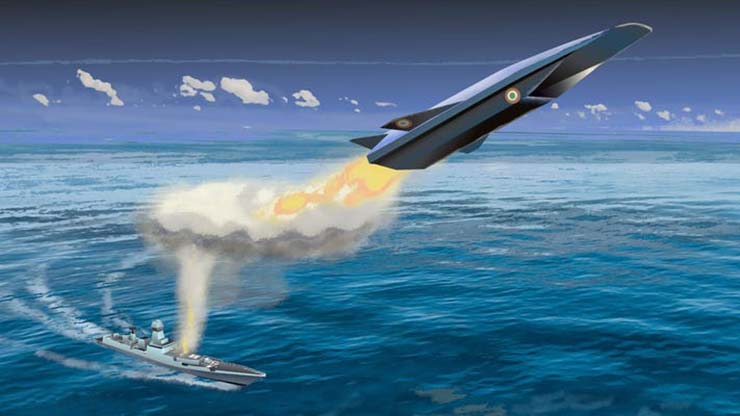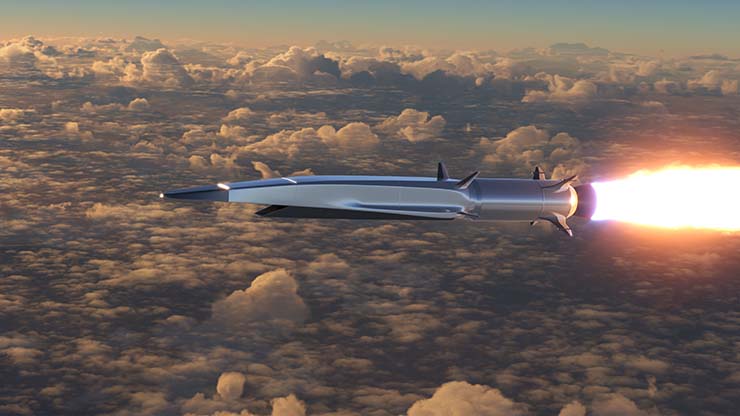
Hypersonic weapons have ushered in a new phase in the global arms race, surpassing traditional ballistic missiles in speed and power. Recently leaked US intelligence documents have revealed China’s lead in hypersonic weapon development. The successful test of the new long-range DF-27 hypersonic missile by China’s PLA in February 2023 has the potential to evade US missile defence and hit targets nearly 8,000 kilometres away. As a growing global power, India needs to prioritise developing its own hypersonic weapons to remain competitive in modern warfare.
Hypersonic Weapons: Unstoppable and Untrackable
The era of hypersonic flight has brought about a new class of weapons that have the potential to change the course of modern warfare. Defined as flight through the atmosphere at speeds exceeding Mach 5, hypersonic weapons come in two types: boost-glide and scramjet.
With boost-glide systems, rockets propel payloads to high speeds before releasing them to glide unpowered to their destination. In contrast, scramjet technology employs a booster to attain cruising speeds and enables combustion in supersonic airflow. Although hypersonic glide vehicles fly at lower altitudes, they can manoeuvre mid-flight, making them challenging to track and destroy.
The deployment of such weapons by China would be destabilising, but the successful testing of a hypersonic glide vehicle should not be taken as an indication of immediate deployment.
The Rise of China’s Hypersonic Missiles: A Threat to Global Security
China’s military has made significant strides in hypersonic technology, with a variety of operational hypersonic weapon systems. The DF-17, a medium-range ballistic missile, can mount the DF-ZF hypersonic glide vehicle, which can reach speeds of Mach 10 and has a range of 2,500 kilometres.

In 2018, China tested the Starry Sky-2, a hypersonic wave-rider that achieved speeds of Mach 5.5 for 400 seconds. The DF-26 ballistic missile is known as the “Guam killer,” and China also has the DF-41 intercontinental ballistic missile, capable of delivering an HGV with a range of over 14,000 kilometres. Furthermore, the YJ-21 anti-ship hypersonic missile poses a significant threat to aircraft carriers.
In August, China conducted a test of a hypersonic glide vehicle, as confirmed by a Chinese security expert close to the People’s Liberation Army. The weapon was reportedly developed by the China Academy of Aerospace Aerodynamics, a research institute under the state-owned company China Aerospace Science and Technology Corporation. Although China typically announces the launch of its Long March rockets, which were used in this test, there was no public announcement of the August launch.
China’s hypersonic missile program has recently gained attention due to the leaked classified document from the Pentagon. The document revealed China’s secret testing of a long-range hypersonic missile, the DF-27 ICBM. Its hypersonic glide capability and range of 5,000 to 8,000 km makes it a significant threat to US military bases on Guam and targets in East or Southeast Asia and a considerable portion of the Pacific. Moreover, US military leaders fear that China’s other hypersonic missiles, such as the DF-41 ICBM and the YJ-21 anti-ship missile, can hit moving targets and manoeuvre during re-entry, giving them the ability to strike large ships during the terminal phase of flight. At present, the US and its allies have no credible defence against Chinese hypersonic missiles.
The Race for Hypersonic Technology: India’s National Security at Stake
Hypersonic weapons pose a significant threat to nuclear deterrence. They are seen as equivalent to nuclear weapons and raise concerns about the combination of high-precision warheads with low-yield nuclear warheads. China’s new DF-27 missile endangers India’s national security as it can target all areas in India and beyond. India lags behind China in hypersonic technology and is developing its own hypersonic missiles to enhance its defence capabilities.
India must develop hypersonic capabilities to keep up with China’s expanding nuclear weapons program and hypersonic technology. The DF-27 missile gives China greater precision strike options, making the development of hypersonic weapons crucial for India’s national security. Hypersonic weapons would enable India to target weapon storage areas and command and control centres in Tibet and Xinjiang, and keep large ships and aircraft carriers away from its shores.
However, hypersonic technology would evade existing missile defence systems, requiring robust and effective air defence systems. Without it, India risks being marginalized in the conventional domain and losing its position in international diplomacy.
India must hasten the development of indigenous hypersonic technology and accelerate the BRAHMOS II program. Simultaneously, it needs to evolve deployable directed-energy air defence weapons to protect critical sites such as the NCR region and other strategic and command and control sites.
-The writer is a Defence and Aerospace Analyst. The views expressed are personal and do not necessarily reflect the views of Raksha Anirveda








